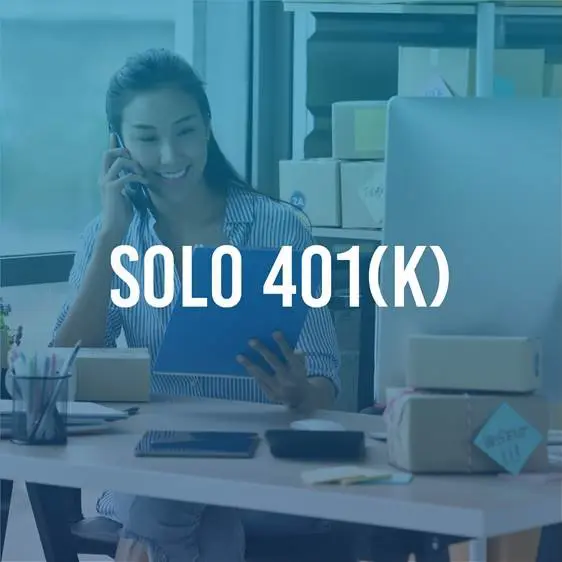
Are you self-employed? No full-time employees in any of the companies you own? Great! You are eligible to save for retirement and lower your tax burden with a Solo 401k.
Unlike the IRA, the Solo 401k is a two-part plan. You have the “Plan”, and you have the “Participant”. Your company sponsors the plan, and you are the participant. Business partners can each participate in the Solo 401k. As a result, you can stick away more for later and enjoy a tax reduction today.
Benefits of the Solo 401(k) vs. the IRA:
- Higher contribution limits. You can contribute the lesser of 25% of your income up to $61,000 for 2022 or $66,000 in 2023.
- The ability to borrow money for personal use. You cannot take a loan from an IRA, but you can borrow the lesser of 50% of the plan value up to $50,000 from a Solo 401(k).
- If you use a Solo 401(k) to purchase a property with debt, then the income from that asset will not be subject to Unrelated Debt Financed Income Tax (UDFI). You will not pay any tax and you will not have any form 990T tax return filing requirements. UDFI is required when IRAs use leverage to acquire assets.
Pre-Tax or After-Tax
The answer is, “Both”! Unlike the IRA, the Solo 401(k) “participant” bucket can receive after-tax contributions which are treated the same as Roth IRA contributions.
The passing of the SECURE Act 2.0 removes the “Required Minimum Distribution” (RMD) requirement for employer-sponsored Roth accounts, such as Roth 401(k)s. Great news for savers!
Catch-Up Contributions
When you turn 50 you are eligible to contribute more to your retirement account. The increase in contributions is referred to as a “catch-up contribution”.
With the passing of SECURE 2.0, the catch-up contribution limit for employees aged 50 and over who participate in 401(k), 403(b), most 457 plans, and the federal government’s Thrift Savings Plan is increased to $7,500, up from $6,500.
In 2023 the participant contribution for someone under 50 is $22,500. If you are 50 or over, add that extra $6,500 and you can now contribute a total of $30,000.
Always discuss your retirement contributions with your tax advisor to make sure you are within guidelines. Your tax advisor will need this information when filing your taxes so you can take advantage of any tax savings coming to you.
uDirect IRA Services is here to help. Reach out to us at info@uDirectIRA.com with all your self-directed retirement questions. Click HERE to schedule a consultation.

